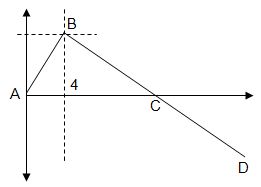As follow-up on today's memo discussion, here are some comments and further clarification of the marking memorandum.
Something on interpretations of vector and scalar answers
The aim with these questions in this control test was to emphasise that final numerical answers must be interpreted. It could help learners if they make it a habit to interpret answers. However, what do we do with the interpretation when the final numerical answer is not the same as the memo? Let's look at it by using two examples.
Q2.2: If the basic formula is correct, but the learner makes one substitution error, that substitution mark is lost and the mark for the final numerical answer is forfeited (two marks gone). Let's say the learner's final numerical answer is -7 m/s instead of the -2,13 m/s. If the learner's interpretation is now "vf = 7 m/s; west", the mark for the interpretation is given. Although the learner has made a mistake in doing the calculation, the learner can interpret the answer scientifically and for that we want to award him/her. So, this learners gets 2/4.
Q4.2.1: The learner, for example, makes a mistake in the substitution step (mark gone and mark for answer forfeited). Let us say the learner gets vf = -20 m/s. Then the interpretation should be "Speed = 20 m/s" and for that you award the interpretation mark.
The way interpretation marks are awarded might differ from paper to paper, but in this paper the mark for interpretation is basically done in the same way as when we apply "positive marking". However, we do not want to call it positive marking, because the term "positive marking" is actually applicable to one calculation going into another.
Lastly on interpretation: If the interpretation is about a scalar (height, speed) and direction is included in the interpretation, the mark for interpretation is NOT awarded.
Further comments on specific questions are as follows:
Q5.3
Accept Newton's second law of motion in terms of momentum. The mark allocation is as follows: The resultant/net force acting on an object (tick) is equal to the rate of change of momentum of the object (tick) in the direction of the resultant/net force (tick).
Q5.2
If a force diagram is given: Max ¾
Numbers as labels are not accepted.
Q4.3
Upward as negative is not compulsory in Q4.3. An alternative correct graph is as follows:
Q3.3.1
Final memo decision on this one. If a learner answers "-F", ignore the "-" and award the mark. We accept that the learner knows the magnitude is "F". Continue to mark the motivation part, and award marks as indicated in the memo.
Q1.1
Very unfortunate, we have to accept A & D. Option D slipped into this question. The statement is incorrect, because it is possible to tell what happens with acceleration, momentum and velocity at the highest point. Hence, D must also be accepted as an answer.


No comments:
New comments are not allowed.